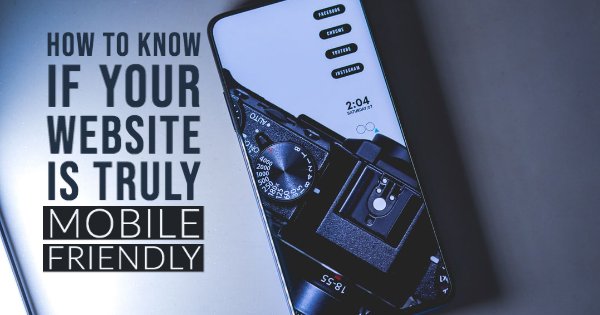If you run a business, you probably know it’s not enough to just have a website. Your website needs to be both visually appealing and fully functional in order to achieve your goals. But have you thoroughly tested the theory that your website is accessible to all users?
Contrary to what you might picture in your head, not everyone will be viewing your site from their desktop computer. In fact, more of us are using mobile devices to access the internet than ever. And since more than 51% of a business’s online traffic comes from smartphone use, you’ll want to make every effort to ensure your website provides an exemplary experience for mobile visitors.
Custom websites that are mobile friendly are less frustrating to users. But if you need another reason why you need a mobile friendly website, consider the fact that Google tends to reward sites that provide a positive user experience. Google also recently rolled out mobile first indexing, which means that the mobile version of your site matters more for your rankings than ever. Whether your site is adaptive or responsive, it needs to make adjustments based on how it’s being viewed.
So how do you know for sure whether your site is truly mobile friendly? Here are a few tips that will give you a better idea.
Resize Your Browser Window
While this method isn’t foolproof (and works only for responsive, rather than adaptive, websites), it can be a good indication of whether your site can be viewed properly on a mobile device. Pull up your site’s URL while on a laptop or desktop computer and resize the window of your browser so it mirrors the length and width of a smartphone screen. If the layout of your site automatically adjusts to that new size — meaning the elements on the site move in position and size for proper viewing, rather than having the page be cut off — that generally means that your site has a responsive design. Some mobile friendly websites will actually detect the device being used to view the site, which means this test might not be 100% accurate. But if you find that the images and text are cut off when you resize your browser, you’ll want to look into the issue a bit further.
Examine Text and Button Size
Part of viewing a site on a mobile device means using your thumb and fingers to interact with a site on a small screen. If your site isn’t built with this kind of tactile interaction in mind, your prior custom web designers might have placed navigational elements too close together or made text too small to read. Links and buttons need to be easy to click, especially if you want to facilitate easy check-out on your site. Ideally, users should be able to read your content without zooming in and tap buttons and links without incident. If you’re unable to do this yourself when viewing your site on your smartphone, you may need to enlist help from a firm that offers web design services to make some changes.
Analyze Your Load Speed
Page load speed matters a lot for all users, regardless of the device they use to view your site. But mobile users, in particular, are likely to abandon your site if it’s too slow. They’ll simply move onto the next option. Websites may be slow to load for a number of reasons, including large images and video content. But it’s important to get to the bottom of the issue and resolve it if you want to reach mobile users. After running some simple tests on your own, you can work with a firm that offers web design services to speed up your site.
These three tips are fairly easy to execute yourself, but a company that offers web design services can conduct a more thorough site audit and make recommendations that will ensure your site is truly mobile friendly. To learn more about the web design services we offer, please contact us today.

